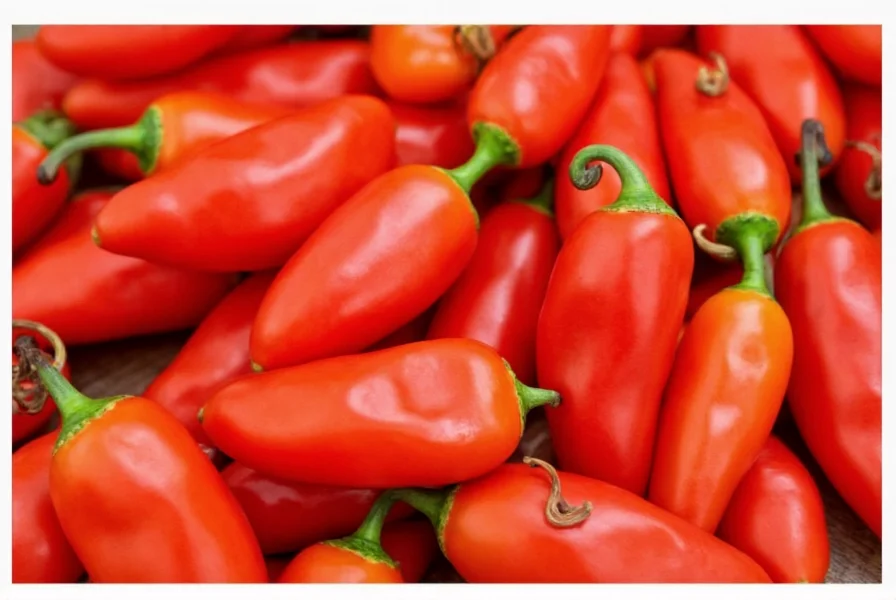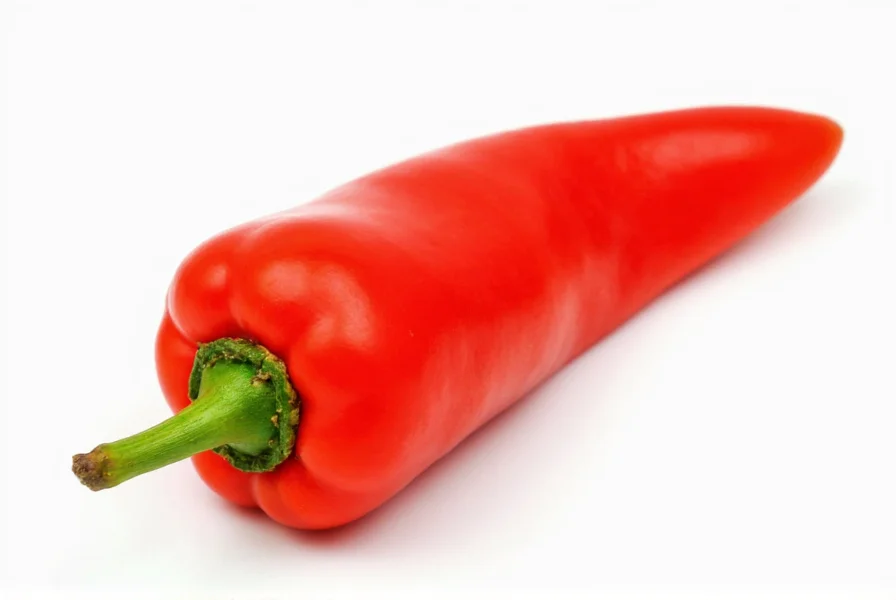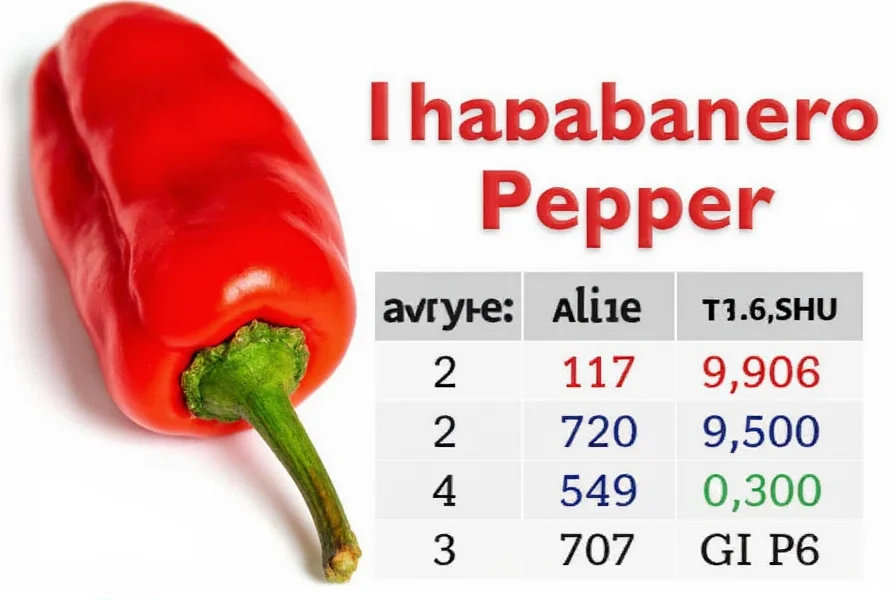Understanding the precise heat level of habanero peppers helps cooks and spice enthusiasts make informed decisions in the kitchen. The Scoville scale, developed by pharmacist Wilbur Scoville in 1912, measures the concentration of capsaicinoids—the compounds responsible for a pepper's heat.
What the Scoville Scale Really Means
Originally, the Scoville Organoleptic Test involved diluting pepper extract in sugar water until the heat became undetectable to a panel of tasters. Today, high-performance liquid chromatography (HPLC) provides more accurate measurements of capsaicinoid content, which scientists then convert to Scoville units.
When you handle or taste habaneros, that intense burn you experience directly correlates to their position on this scale. The human tongue can detect capsaicinoids at concentrations as low as 0.01 ppm (about 16 SHU), while habaneros deliver heat at levels hundreds of times more intense.
Habanero Heat in Context: Pepper Comparison Chart
| Pepper Variety | Scoville Heat Units (SHU) | Relative Heat Level |
|---|---|---|
| Bell Pepper | 0 SHU | Mild |
| Jalapeño | 2,500-8,000 SHU | Mild to Medium |
| Serrano | 10,000-23,000 SHU | Medium |
| Habanero | 100,000-350,000 SHU | Very Hot |
| Ghost Pepper | 855,000-1,041,427 SHU | Extremely Hot |
| Carolina Reaper | 1,400,000-2,200,000 SHU | World's Hottest |
This comparison shows how habaneros dramatically exceed common peppers like jalapeños (which measure 2,500-8,000 SHU) while remaining significantly milder than superhots like the Carolina Reaper. Understanding these differences helps prevent unpleasant surprises when cooking with different chili varieties.

Factors That Influence Habanero Heat Levels
Several elements affect where a particular habanero falls within its 100,000-350,000 SHU range:
- Genetic variety: Orange habaneros typically measure 100,000-350,000 SHU, while the slightly milder Red Savina habanero averages around 577,000 SHU. Chocolate habaneros often reach 425,000 SHU.
- Growing conditions: Stressors like inconsistent watering, temperature fluctuations, and nutrient deficiencies can increase capsaicin production.
- Maturity level: Fully ripe (orange/red) habaneros generally pack more heat than green, unripe ones.
- Plant position: Peppers growing in direct sunlight often develop higher capsaicin concentrations.
- Part of the pepper: The placenta (white ribs inside) contains the highest concentration of capsaicin, not the seeds as commonly believed.
Practical Implications for Cooks and Consumers
Knowing the habanero's scoville units range helps you use these peppers safely and effectively. When working with habaneros:
- Always wear gloves to prevent capsaicin transfer to sensitive areas
- Start with small amounts—a single habanero can flavor an entire pot of sauce
- Remove seeds and membranes for reduced heat while maintaining flavor
- Balance heat with dairy products (milk, yogurt) or acidic ingredients (lime juice)
- Understand that cooking doesn't eliminate capsaicin—it redistributes throughout the dish
Many people wonder how habaneros compare to their close relative, the Scotch bonnet. While both register between 100,000-350,000 SHU, habaneros typically deliver a sharper, more immediate heat, whereas Scotch bonnets offer a slower-building, fruitier burn. The difference comes down to subtle variations in capsaicinoid composition rather than total heat units.

Measuring Heat Beyond the Scoville Scale
While the Scoville scale remains popular for consumer understanding, food scientists increasingly rely on ASTA pungency units, which measure capsaicinoid concentration directly. One ASTA unit equals approximately 15 Scoville units. This more precise measurement helps food producers maintain consistent heat levels in commercial products.
For home cooks, the practical takeaway remains the same: treat habaneros with respect. Their position on the scoville units scale means even small amounts significantly impact a dish's heat profile. When substituting habaneros in recipes, remember they're approximately 20-40 times hotter than jalapeños—a crucial consideration for balanced flavor development.
How many scoville units does a typical habanero pepper have?
Most habanero peppers measure between 100,000 and 350,000 Scoville Heat Units (SHU). The exact heat level varies based on growing conditions, maturity, and specific variety, with some specialty cultivars like the Red Savina reaching up to 577,000 SHU.
Is a habanero hotter than a jalapeño?
Yes, habaneros are significantly hotter than jalapeños. While jalapeños measure 2,500-8,000 SHU, habaneros range from 100,000-350,000 SHU—making them approximately 20-40 times hotter. This dramatic difference means you should use much smaller quantities of habanero when substituting in recipes.
What makes habanero peppers so hot?
Habaneros contain high concentrations of capsaicinoids, particularly capsaicin and dihydrocapsaicin. These compounds activate TRPV1 receptors in your mouth and skin that normally respond to heat, creating the burning sensation. The specific genetic makeup of habaneros produces more of these compounds than milder peppers.
How can I reduce the heat of a habanero pepper?
To reduce habanero heat, remove the white placental ribs and seeds (where most capsaicin concentrates), soak the pepper in milk or vinegar before use, or cook it with dairy products. Remember that cooking doesn't destroy capsaicin—it redistributes it throughout your dish. Always wear gloves when handling habaneros to avoid skin irritation.
Are all habanero peppers equally hot?
No, habanero heat varies significantly. Orange habaneros typically measure 100,000-350,000 SHU, while Red Savina varieties average around 577,000 SHU. Chocolate habaneros often reach 425,000 SHU. Growing conditions, sunlight exposure, water stress, and soil nutrients all influence final heat levels, so even peppers from the same plant can differ in spiciness.
Frequently Asked Questions
How many scoville units does a typical habanero pepper have?
Most habanero peppers measure between 100,000 and 350,000 Scoville Heat Units (SHU). The exact heat level varies based on growing conditions, maturity, and specific variety, with some specialty cultivars like the Red Savina reaching up to 577,000 SHU.
Is a habanero hotter than a jalapeño?
Yes, habaneros are significantly hotter than jalapeños. While jalapeños measure 2,500-8,000 SHU, habaneros range from 100,000-350,000 SHU—making them approximately 20-40 times hotter. This dramatic difference means you should use much smaller quantities of habanero when substituting in recipes.
What makes habanero peppers so hot?
Habaneros contain high concentrations of capsaicinoids, particularly capsaicin and dihydrocapsaicin. These compounds activate TRPV1 receptors in your mouth and skin that normally respond to heat, creating the burning sensation. The specific genetic makeup of habaneros produces more of these compounds than milder peppers.
How can I reduce the heat of a habanero pepper?
To reduce habanero heat, remove the white placental ribs and seeds (where most capsaicin concentrates), soak the pepper in milk or vinegar before use, or cook it with dairy products. Remember that cooking doesn't destroy capsaicin—it redistributes it throughout your dish. Always wear gloves when handling habaneros to avoid skin irritation.
Are all habanero peppers equally hot?
No, habanero heat varies significantly. Orange habaneros typically measure 100,000-350,000 SHU, while Red Savina varieties average around 577,000 SHU. Chocolate habaneros often reach 425,000 SHU. Growing conditions, sunlight exposure, water stress, and soil nutrients all influence final heat levels, so even peppers from the same plant can differ in spiciness.











 浙公网安备
33010002000092号
浙公网安备
33010002000092号 浙B2-20120091-4
浙B2-20120091-4